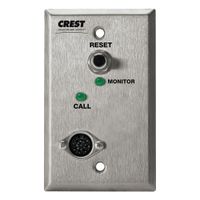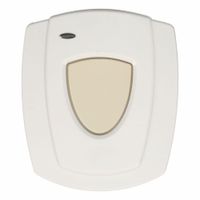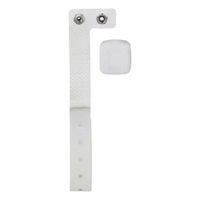Call +(254) 703 030 000 / 751 483 999 / 721 704 777
- Home
- Safety
- Medical Supplies Equipment
- Patient Resident Monitoring
.....Read More
Frequently Asked Questions
What are the benefits of using patient and resident monitoring devices in long-term care facilities?
Patient and resident monitoring devices in long-term care facilities offer numerous benefits that enhance the quality of care and improve operational efficiency. Firstly, these devices provide continuous health monitoring, allowing for real-time data collection on vital signs such as heart rate, blood pressure, and oxygen levels. This enables early detection of potential health issues, facilitating timely interventions and reducing the risk of complications.
Secondly, monitoring devices enhance patient safety by alerting staff to emergencies, such as falls or sudden changes in a resident's condition. This rapid response capability can significantly reduce the severity of incidents and improve outcomes.
Thirdly, these devices support personalized care plans by providing detailed insights into each resident's health trends and patterns. This data-driven approach allows healthcare providers to tailor interventions and treatments to individual needs, improving overall care quality.
Additionally, monitoring devices can improve staff efficiency by automating routine checks and reducing the need for manual data entry. This allows caregivers to focus more on direct patient care and less on administrative tasks, enhancing job satisfaction and reducing burnout.
Furthermore, the use of monitoring technology can lead to cost savings by minimizing hospital readmissions and reducing the need for emergency interventions. By maintaining residents' health more effectively within the facility, long-term care providers can optimize resource allocation and improve financial sustainability.
Finally, these devices can enhance communication with family members by providing them with access to health data and updates, fostering transparency and trust in the care process. Overall, patient and resident monitoring devices are crucial in promoting a safer, more efficient, and personalized care environment in long-term care facilities.
How do call-for-assistance devices work in memory care settings?
Call-for-assistance devices in memory care settings are designed to enhance the safety and well-being of residents with cognitive impairments, such as dementia or Alzheimer's disease. These devices typically include wearable pendants, wristbands, or stationary buttons that residents can easily access. When activated, the device sends a signal to a central monitoring system or directly to caregivers, alerting them that assistance is needed.
The system operates through wireless technology, often using radio frequency (RF), Wi-Fi, or Bluetooth to ensure reliable communication. Some advanced systems integrate with the facility's existing communication infrastructure, allowing alerts to be sent to caregivers' mobile devices or pagers. This ensures a rapid response, which is crucial in emergencies or when residents are in distress.
In addition to manual activation, some devices are equipped with automatic fall detection sensors. These sensors can identify sudden movements or impacts indicative of a fall and automatically trigger an alert, even if the resident is unable to press the button. This feature is particularly beneficial in memory care settings, where residents may forget to call for help or be unable to do so due to confusion or injury.
Furthermore, call-for-assistance devices can be integrated with location tracking systems. This allows caregivers to quickly locate a resident in need, which is essential in preventing wandering—a common issue in memory care facilities. The integration of these technologies helps create a safer environment by ensuring that residents receive timely assistance while maintaining their dignity and independence.
What features should be considered when choosing a resident tag or pendant system?
When choosing a resident tag or pendant system, consider the following features:
1. **Range and Coverage**: Ensure the system covers the necessary area, whether it's a single building or a multi-acre campus.
2. **Battery Life**: Look for long-lasting battery life to minimize maintenance and ensure reliability.
3. **Durability**: The device should be water-resistant and robust enough to withstand daily wear and tear.
4. **Ease of Use**: The system should be user-friendly for both residents and staff, with simple activation and deactivation processes.
5. **Alert System**: Choose a system with customizable alert options, such as audible alarms, text notifications, or integration with existing communication systems.
6. **Location Tracking**: Consider systems with real-time location tracking to quickly locate residents in case of an emergency.
7. **Integration**: Ensure compatibility with existing security and communication systems for seamless operation.
8. **Scalability**: The system should be easily expandable to accommodate more users or additional features as needed.
9. **Privacy and Security**: Ensure data protection and privacy compliance, with secure data transmission and storage.
10. **Cost**: Evaluate the total cost of ownership, including initial purchase, installation, maintenance, and potential upgrades.
11. **Support and Training**: Look for systems that offer comprehensive support and training for staff to ensure effective use.
12. **Customization**: The ability to customize features to meet specific needs, such as different alert levels or user profiles.
13. **Aesthetics and Comfort**: The design should be discreet and comfortable for residents to wear consistently.
14. **Reliability**: Choose a system with a proven track record of reliability and positive user reviews.
15. **Vendor Reputation**: Consider the reputation and experience of the vendor in providing similar solutions.
How do fall monitoring systems detect and alert caregivers of a fall?
Fall monitoring systems detect and alert caregivers of a fall using a combination of sensors, algorithms, and communication technologies. These systems typically employ accelerometers, gyroscopes, and sometimes magnetometers to monitor the movement and orientation of the user.
1. **Sensors**: Accelerometers measure changes in velocity, while gyroscopes track rotational movement. These sensors are often embedded in wearable devices like wristbands, pendants, or smartwatches. Some systems also use pressure sensors in flooring or bed mats to detect sudden changes in pressure indicative of a fall.
2. **Data Analysis**: The data collected by the sensors is processed using algorithms designed to distinguish between normal activities and falls. These algorithms analyze patterns such as rapid acceleration followed by a sudden stop, which are characteristic of falls. Machine learning techniques may be employed to improve accuracy by learning from previous data.
3. **Thresholds and Patterns**: The system sets specific thresholds for movement and orientation changes. If these thresholds are exceeded, indicating a potential fall, the system triggers an alert. Some systems also consider contextual information, such as the time of day or the user’s activity level, to reduce false alarms.
4. **Alert Mechanism**: Once a fall is detected, the system sends an alert to caregivers or emergency services. This can be done through various communication methods, including smartphone apps, text messages, or automated phone calls. Some systems also have built-in speakers to alert nearby individuals.
5. **Additional Features**: Advanced systems may include GPS for location tracking, enabling caregivers to locate the individual quickly. Some systems also offer two-way communication, allowing the fallen individual to speak directly with a caregiver or emergency responder.
These systems aim to provide timely assistance, reduce response time, and improve the safety and independence of individuals at risk of falling.
What are the privacy concerns associated with patient wandering systems?
Patient wandering systems, designed to monitor and manage the movement of patients, particularly those with cognitive impairments, raise several privacy concerns:
1. **Data Collection and Storage**: These systems often collect sensitive personal data, including location, health status, and behavioral patterns. The storage of such data poses risks if not adequately protected, leading to potential unauthorized access or breaches.
2. **Consent and Autonomy**: Patients may not fully understand or consent to the monitoring, especially if they have cognitive impairments. This raises ethical concerns about autonomy and the right to privacy, as patients might be monitored without their explicit approval.
3. **Data Sharing**: Information collected by wandering systems may be shared with third parties, such as healthcare providers, insurers, or technology vendors, without the patient's knowledge or consent. This can lead to misuse or exploitation of personal data.
4. **Surveillance and Stigmatization**: Continuous monitoring can create a sense of surveillance, potentially leading to stigmatization or discrimination against patients. It may also affect their dignity and freedom, as they might feel constantly watched.
5. **Security Vulnerabilities**: These systems can be vulnerable to cyberattacks, which could lead to unauthorized access to sensitive data. Hackers could potentially manipulate the system, leading to false alerts or disabling the monitoring, endangering patient safety.
6. **Regulatory Compliance**: Ensuring compliance with privacy regulations such as HIPAA (Health Insurance Portability and Accountability Act) is crucial. Non-compliance can result in legal consequences and loss of trust from patients and their families.
7. **Data Accuracy and Misuse**: Inaccurate data collection or interpretation can lead to incorrect conclusions about a patient's behavior, potentially resulting in inappropriate interventions or care decisions.
Addressing these concerns requires robust data protection measures, clear consent protocols, and transparent policies to ensure patient privacy and trust.
How can monitoring devices improve the safety of residents with dementia?
Monitoring devices can significantly enhance the safety of residents with dementia by providing continuous oversight and immediate alerts in case of emergencies. These devices, such as wearable GPS trackers, smart home sensors, and video surveillance systems, help caregivers and family members keep track of the residents' movements and activities, reducing the risk of wandering—a common and dangerous behavior in individuals with dementia.
Wearable devices equipped with GPS technology allow caregivers to monitor the real-time location of residents, ensuring they do not stray into unsafe areas. If a resident leaves a designated safe zone, the device can send instant alerts to caregivers, enabling quick intervention. This feature is crucial in preventing accidents or getting lost, which can lead to severe consequences.
Smart home sensors, including motion detectors and door/window sensors, can track the daily activities of residents. These sensors can detect unusual patterns, such as a lack of movement or attempts to leave the premises at odd hours, and alert caregivers to potential issues. This proactive approach allows for timely assistance, reducing the risk of falls or other accidents.
Video surveillance systems provide an additional layer of security by allowing caregivers to remotely monitor residents. This visual oversight can help in assessing the immediate environment and ensuring that residents are safe and comfortable. In case of an emergency, caregivers can quickly respond, potentially preventing harm.
Moreover, monitoring devices can help in managing medication schedules by sending reminders, ensuring that residents take their medications on time, which is crucial for their health and safety.
Overall, these technologies offer peace of mind to caregivers and family members, knowing that they can provide timely support and intervention, thereby significantly improving the safety and quality of life for residents with dementia.
What are the costs associated with implementing a comprehensive patient monitoring system in a care facility?
The costs associated with implementing a comprehensive patient monitoring system in a care facility can be categorized into several key areas:
1. **Initial Hardware and Software Costs**: This includes the purchase of monitoring devices such as vital sign monitors, wearable sensors, and central monitoring stations. Software costs encompass the acquisition of necessary applications and licenses for data management and analysis.
2. **Installation and Integration**: Costs related to the installation of hardware and integration with existing systems, such as electronic health records (EHRs), are significant. This may require custom development and testing to ensure seamless operation.
3. **Infrastructure Upgrades**: Facilities may need to upgrade their IT infrastructure to support the new system, including enhanced network capabilities, data storage solutions, and cybersecurity measures to protect patient data.
4. **Training and Support**: Staff training is essential for effective system use, which incurs costs for training programs and materials. Ongoing technical support and maintenance are also necessary to ensure system reliability and performance.
5. **Compliance and Regulatory Costs**: Ensuring the system complies with healthcare regulations such as HIPAA involves legal consultations and potential modifications to meet standards, adding to the overall cost.
6. **Operational Costs**: These include the day-to-day expenses of running the system, such as electricity, internet connectivity, and routine maintenance. Additionally, there may be costs associated with data management and analysis.
7. **Upgrades and Scalability**: Over time, the system may require upgrades to incorporate new technologies or expand its capabilities, which can incur additional costs.
8. **Contingency and Risk Management**: Allocating funds for unforeseen issues or system failures is crucial, as these can lead to unexpected expenses.
Overall, the implementation of a comprehensive patient monitoring system involves significant upfront and ongoing costs, but it can lead to improved patient outcomes and operational efficiencies in the long term.



